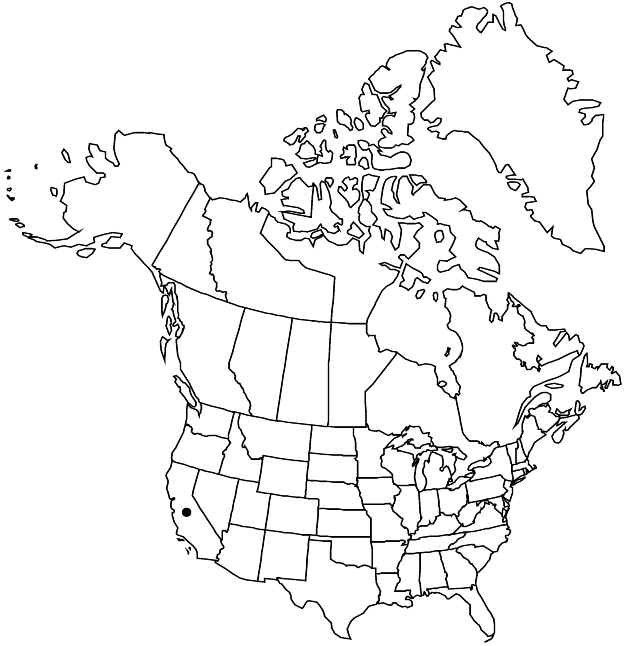Difference between revisions of "Eriogonum umbellatum var. polyanthum"
Contr. W. Bot. 11: 5. 1903.
FNA>Volume Importer |
FNA>Volume Importer |
||
| Line 11: | Line 11: | ||
|name=Eriogonum polyanthum | |name=Eriogonum polyanthum | ||
|authority=Bentham | |authority=Bentham | ||
| + | |rank=species | ||
|publication_title=in A. P. de Candolle and A. L. P. P. de Candolle, Prodr. | |publication_title=in A. P. de Candolle and A. L. P. P. de Candolle, Prodr. | ||
|publication_place=14: 12. 1856 | |publication_place=14: 12. 1856 | ||
| Line 17: | Line 18: | ||
|name=Eriogonum umbellatum subsp. polyanthum | |name=Eriogonum umbellatum subsp. polyanthum | ||
|authority=(Bentham) S. Stokes | |authority=(Bentham) S. Stokes | ||
| + | |rank=subspecies | ||
}} | }} | ||
|hierarchy=Polygonaceae;Polygonaceae subfam. Eriogonoideae;Eriogonum;Eriogonum subg. Oligogonum;Eriogonum umbellatum;Eriogonum umbellatum var. polyanthum | |hierarchy=Polygonaceae;Polygonaceae subfam. Eriogonoideae;Eriogonum;Eriogonum subg. Oligogonum;Eriogonum umbellatum;Eriogonum umbellatum var. polyanthum | ||
| Line 32: | Line 34: | ||
|elevation=800-1500 m | |elevation=800-1500 m | ||
|distribution=Calif. | |distribution=Calif. | ||
| − | |discussion=<p>The inflorescences of < | + | |discussion=<p>The inflorescences of <i></i>var.<i> polyanthum</i> are commonly compound-umbellate, but plants with reduced yet bracteated inflorescences do occur. Those with a reduced inflorescence technically consist of a long (6–10 cm), central, bractless peduncle and two lateral branches (3–4 cm), with each of the latter bearing a peduncle (3–6 cm). Such branches seem to have a whorl of leaflike bracts, but actually the bracts are positioned between the branch and involucres (technically at the base of the peduncle) and thus are like other members of the genus.</p><!-- |
| − | --><p>The name < | + | --><p>The name <i></i>var.<i> polyanthum</i> has been misapplied in California to plants here attributed to <i></i>var.<i> modocense</i> and <i></i>var.<i> dumosum</i>.</p> |
|tables= | |tables= | ||
|references= | |references= | ||
| Line 42: | Line 44: | ||
-->{{#Taxon: | -->{{#Taxon: | ||
name=Eriogonum umbellatum var. polyanthum | name=Eriogonum umbellatum var. polyanthum | ||
| − | |||
|authority=(Bentham) M. E. Jones | |authority=(Bentham) M. E. Jones | ||
|rank=variety | |rank=variety | ||
| Line 57: | Line 58: | ||
|publication year=1903 | |publication year=1903 | ||
|special status= | |special status= | ||
| − | |source xml=https://jpend@bitbucket.org/aafc-mbb/fna-data-curation.git/src/ | + | |source xml=https://jpend@bitbucket.org/aafc-mbb/fna-data-curation.git/src/f50eec43f223ca0e34566be0b046453a0960e173/coarse_grained_fna_xml/V5/V5_709.xml |
|subfamily=Polygonaceae subfam. Eriogonoideae | |subfamily=Polygonaceae subfam. Eriogonoideae | ||
|genus=Eriogonum | |genus=Eriogonum | ||
Revision as of 22:56, 16 December 2019
Shrubs, round, rather open, 4–10 × 5–10 dm. Aerial flowering stems erect, 1–2 dm, floccose, without one or more leaflike bracts ca. midlength. Leaves in rather open, terminal rosettes; blade oblanceolate to narrowly elliptic, 1–3 × 0.3–1(–1.3) cm, densely white-tomentose abaxially, thinly floccose or glabrous and light green adaxially, margins plane. Inflorescences umbellate or compound-umbellate, branched 1–2(–3) times; branches thinly floccose or glabrous, occasionally central branch seemingly with a whorl of bracts ca. midlength; involucral tubes 2.5–4 mm, floccose, lobes 2–3.5 mm. Flowers 4–7 mm; perianth bright yellow.
Phenology: Flowering Jun–Sep.
Habitat: Serpentine flats and slopes, oak and montane conifer woodlands
Elevation: 800-1500 m
Discussion
The inflorescences of var. polyanthum are commonly compound-umbellate, but plants with reduced yet bracteated inflorescences do occur. Those with a reduced inflorescence technically consist of a long (6–10 cm), central, bractless peduncle and two lateral branches (3–4 cm), with each of the latter bearing a peduncle (3–6 cm). Such branches seem to have a whorl of leaflike bracts, but actually the bracts are positioned between the branch and involucres (technically at the base of the peduncle) and thus are like other members of the genus.
The name var. polyanthum has been misapplied in California to plants here attributed to var. modocense and var. dumosum.
Selected References
None.
